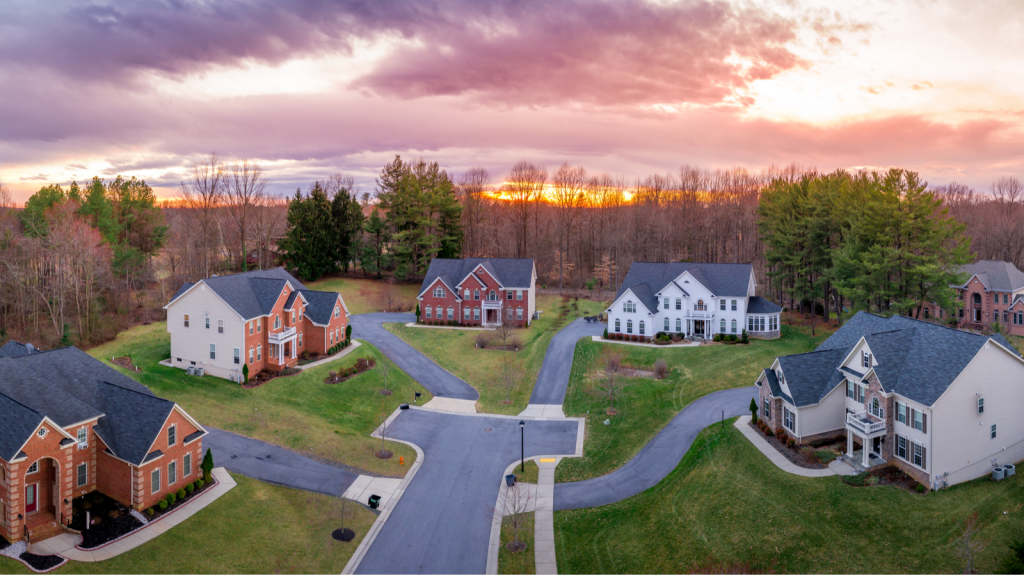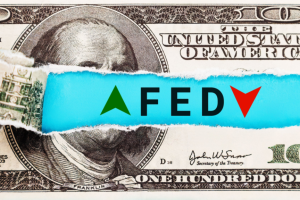
Mortgage rates wield substantial influence over housing prices, evidenced by the drastic 30-year rate drop from nearly 5% in late 2018 to under 3% by late 2021, fueling unprecedented gains of nearly 33% in two years. Conversely, a Central Bank tightening campaign, tripling rates to 7.3% by November 15, curtailed the housing boom, leading to a brief slide from June to December last year. This is projected to have a hefty impact on home sales.
Despite a modest rebound, prices remain only slightly higher than the previous peak. In contrast to years of outpacing inflation, the appreciation of capes, colonials, and condos has slowed relative to the CPI, which measures overall goods and services prices for Americans.
So what does this mean for buyers, sellers, and housing price predictions in 2024? Let’s delve into the factors.
The Current Housing Market
Economists, once optimistic about price increases until 2023, are revising predictions. The US housing market, up 40% during the Covid-19 boom, is set to cool in 2023, per the National Association of Realtors (NAR). Fueled by low borrowing rates and high demand from first-time buyers amid a supply shortage, the market surge is expected to ease.
Rising interest rates may up mortgage costs, but unlike the 2008 crash, stable prices are projected due to strengthened lending standards. Analysts differ on future prices, but agree on an overall housing market slowdown in the coming years.
In 2021, the US housing market saw a 16.9% surge in the median existing home price to $346,900, reaching sales of 6.12 million, the highest since 2006. Fueled by low interest rates, the pandemic-driven boom waned in 2022, with December’s existing-home sales declining for eleven consecutive months to a 4.02 million annual rate, a 34.0% drop from December 2021. The annual figure of 5.03 was the lowest since 2014.
Anticipating a cooled US housing market in 2023, analysts differ on price trends. The Federal Reserve’s signaled interest rate increase is set to slow the market, with resilient lending standards preventing a 2008-style collapse.
13-Year Low Home Sales in October
In October, previously owned home sales dipped 4.1% from September, hitting a slow annualized rate of 3.79 million units—the lowest since August 2010, contrary to analysts’ expectations. Year-over-year, sales were down 14.6%. The October count reflects closings from contracts likely signed in August and September.
The 30-year fixed mortgage rate, dropping to near 7% in late August, sharply rose to over 8% by mid-October, impacting prospective buyers. Lawrence Yun, NAR’s chief economist, noted challenges due to low housing inventory and high mortgage rates but mentioned ongoing multiple offers, especially for starter and mid-priced homes, with price concessions more prevalent in the upper market.
By the end of October, there were 1.15 million homes for sale, a 5.7% year-over-year decrease—half the pre-Covid inventory. This translates to a 3.6-month supply at the current sales pace, putting pressure on prices. The median price of existing homes sold in October reached $391,800, a 3.4% year-over-year increase. Prices rose across all regions for four consecutive months, with approximately 28% of homes selling above list price.
Despite challenges for buyers, sellers benefited from rising prices, reaching a new all-time high for October. Lawrence Yun noted that a typical homeowner accumulated over $100,000 in housing wealth over the past three years.
What Will The Housing Market Look Like in 2024?
The housing market in 2024 faced the repercussions of rising climate change costs. Buyers and builders had to consider expenses for constructing homes resilient to climate change and extreme weather. Total homeownership costs, including purchase price, mortgage rates, property taxes, maintenance, insurance premiums, and more, became a crucial metric.
Despite a recent dip, research firms like Freddie Mac, Zillow, and the National Association of Realtors forecast continued home price increases in 2024. Insufficient home construction to meet demand keeps prices rising, with NAR’s chief economist, Lawrence Yun, expecting a 2.6% increase in 2024.
The shortage persists, with the U.S. still lacking about 3.8 million housing units for sale and rent, according to Freddie Mac’s estimates. Despite a 42% increase in home prices from January 2020 to June 2023, multiple offers on many homes indicate unmet demand due to limited supply, as highlighted in Yun’s July report.
In 2022, surging 30-year fixed mortgage rates doubled, pricing out buyers, cooling the market briefly. Median home prices dipped 2.5% from July 2022 to January 2023 but rebounded by July, hitting $406,700—a 1.9% year-over-year increase. Despite elevated 7.28% mortgage rates, robust demand keeps prices high. Anticipating a drop to around 6% in 2024, the National Association of Realtors (NAR) expects this to fuel demand, sustaining elevated prices, according to Yun.
Similarly, Freddie Mac projected a 0.8% price increase from August 2023 to August 2024, with an additional 0.9% gain in the subsequent year. The rebound is attributed, in part, to a “large cohort of Millennial first-time homebuyers reaching prime home-buying age,” according to Freddie Mac. While favorable for sellers, these forecasts don’t ease the concerns of buyers already struggling with affordability.
Several factors influenced the potential for a US housing market crash in 2024:
Interest Rates and Inflation: The market closely followed interest rates and inflation, where substantial increases could reduce housing affordability. The Federal Reserve aimed for a controlled adjustment to prevent drastic hikes.
Economic Growth: Economic health significantly impacted the housing market. A recession with significant job losses might trigger defaults and foreclosures, potentially lowering home prices. While concerns existed, most economists anticipated sluggish growth, not a severe downturn in 2024.
Supply Constraints: National inventory faced challenges due to construction delays. Despite shortages, higher prices supported the market, with expectations of increased construction activity.
Investor Activity: Institutional investors’ substantial share raised uncertainty. A potential pullback in investor activity could impact prices, although the extent of their influence remained a debated topic.
Mortgage Credit: Assessing the risk of a housing market crash relied on mortgage credit conditions. Unlike pre-2008, current lending standards are tighter, reducing the likelihood of a crash triggered by loose credit.
The Housing Market in 5 Years
Over the next five years, a slowdown is expected, with flat or modestly declining prices. Zillow forecasts a 5.5% increase in home values in the next year, considerably slower than 2021’s 16.9% surge. Subsequent years predict 3.5% in 2023, 3.4% in 2024, 3.3% in 2025, and 3.2% in 2026. The report underscores a persistently low supply of homes for sale, driving prices higher.
Over the next five years, the US housing market is expected to slow, with prices flat or slightly declining. Zillow’s report forecasts a 5.5% increase in home values next year, much slower than the 2021 surge. Subsequent years predict 3.5%, 3.4%, 3.3%, and 3.2%. The report highlights a persistently low supply of homes, driving prices higher.
Looking ahead, experts anticipate a slowdown in price growth, attributing it to rising interest rates, increased housing supply, decreased demand, and buyer affordability challenges.
Rising interest rates are set to raise borrowing costs for homebuyers. After years of record-low mortgage rates, economists anticipate an upward trend. This increase will reduce buyer purchasing power, lowering demand and putting pressure on prices. The anticipated housing market slowdown is further fueled by a growing supply of homes.
The recent boom was propelled by a shortage of supply, but with increased new home construction, the dynamics are expected to shift. Additionally, homeowners who hesitated to sell during the pandemic are likely to list their homes in the coming years, expanding the inventory of homes for sale.
The housing market’s future is influenced by overall home affordability. Record-high prices pose challenges for many buyers, especially first-timers. This, coupled with rising interest rates, may lead to decreased demand and prices. Despite the anticipated slowdown, experts don’t foresee a 2008-style crash. Strengthened lending standards reduce the risk of widespread defaults and foreclosures. The current economic climate, marked by a robust labor market and a stable financial sector, differs significantly from 2008.
On the date of publication, Chris MacDonald did not have (either directly or indirectly) any positions in the securities mentioned in this article. The opinions expressed in this article are those of the writer, subject to the InvestorPlace.com Publishing Guidelines.





